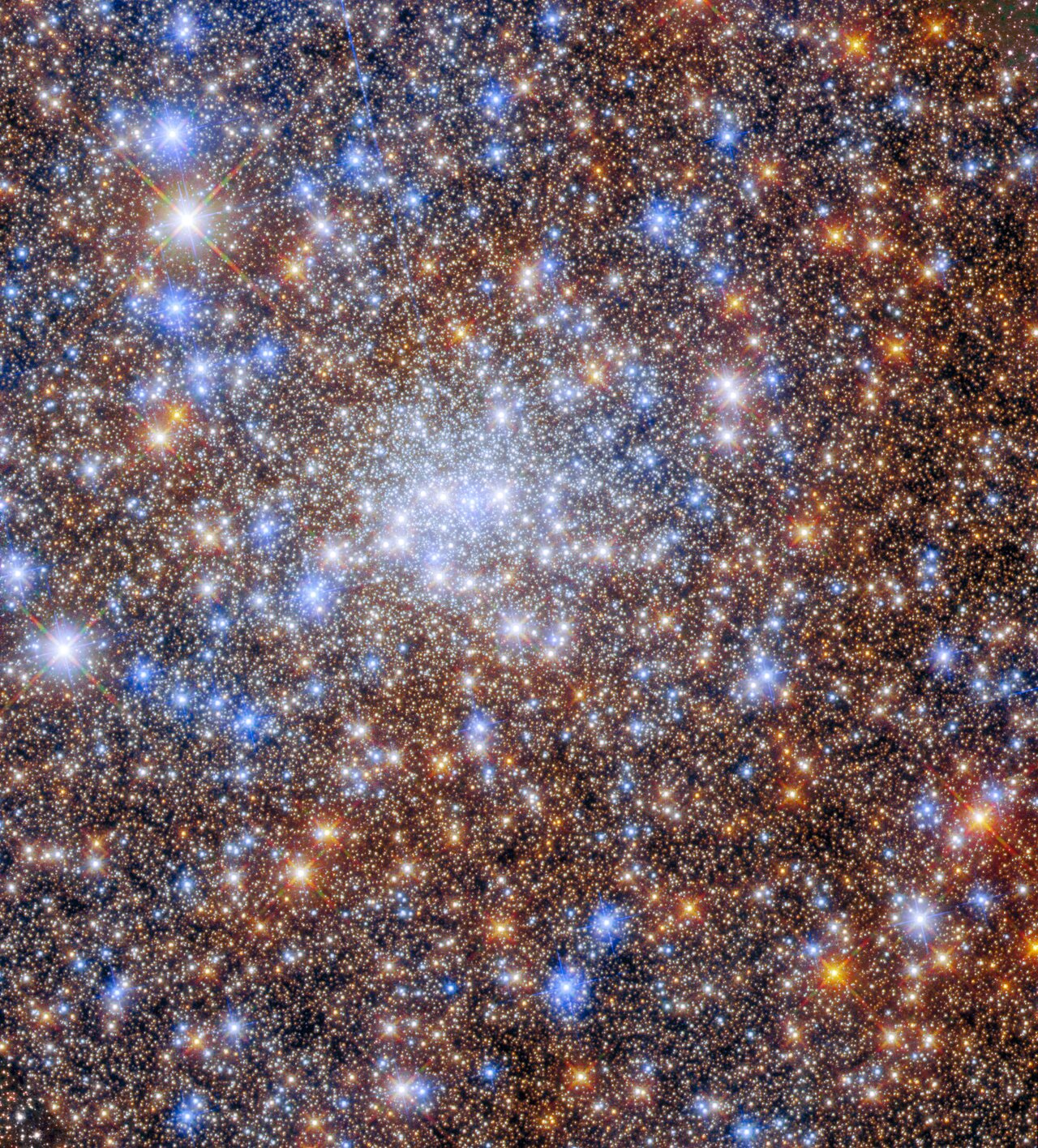Hubble images glittering globular cluster close to Milky Way's core

This star-studded image shows the globular cluster Terzan 4 that lies close to the Milky Way's core. As this image from the NASA/ESA Hubble Space Telescope shows, the hearts of globular clusters are densely packed with stars.
Globular clusters are collections of stars bound together by their mutual gravitational attraction, and can contain millions of individual stars. The individual stars in these dense crowds are almost impossible to distinguish from one another with ground-based telescopes, but can be picked apart using space telescopes.
Astronomers have taken advantage of Hubble's crystal-clear vision to study the stars making up globular clusters, as well as how these systems change over time. Launched in 1990, Hubble has revolutionised the study of globular clusters. Two of Hubble's powerful instruments - the Advanced Camera for Surveys (ACS) and Wide Field Camera 3 (WFC3) were used to capture this glittering scene.
2/ Hubble explored Terzan 4 and other globular clusters to understand the properties of clusters close to the Milky Way's core. These clusters are shrouded in clouds of gas and dust.Read more 🔗 https://t.co/gyHeEkeV60📷 @esa / @HUBBLE_space / @NASA , R. Cohen pic.twitter.com/vxYU9b3unS
— HUBBLE (@HUBBLE_space) September 12, 2022
This observation comes from astronomers using the telescope to explore Terzan 4 and other globular clusters to understand the shape, density, age, and structure of globular clusters close to the centre of our home galaxy - the Milky Way.
Unlike globular clusters elsewhere in the sky, these globular clusters have evaded detailed observation because of the clouds of gas and dust swirling around the galactic core. These clouds blot out starlight in a process that astronomers refer to as ‘extinction’, and complicate astronomical observations.
The Hubble Space Telescope is a project of international cooperation between NASA and ESA (the European Space Agency). ACS was installed on the telescope during Servicing Mission 3B in 2002 while WFC3 was installed during Hubble Servicing Mission 4 in 2009.
- READ MORE ON:
- Hubble Space Telescope
- globular clusters
- globular cluster Terzan 4










